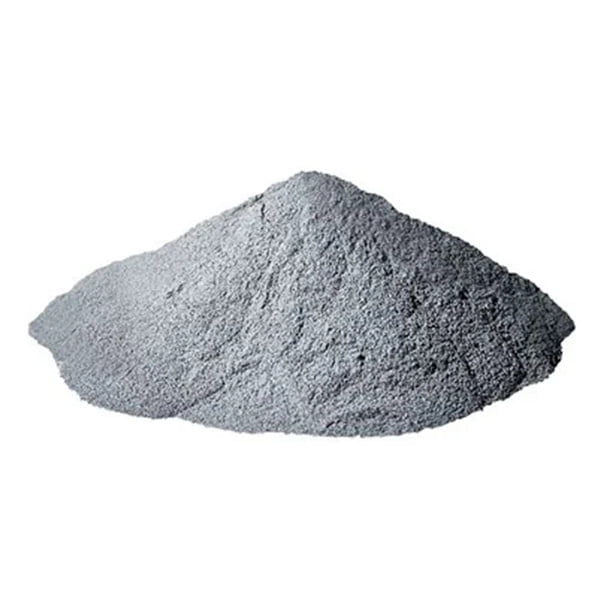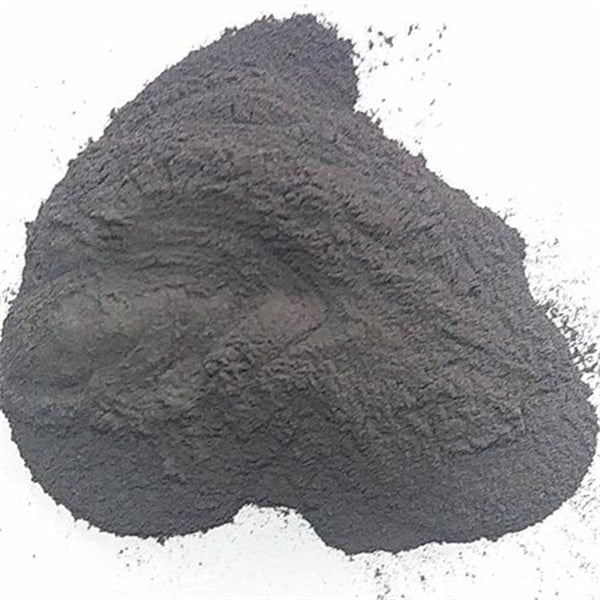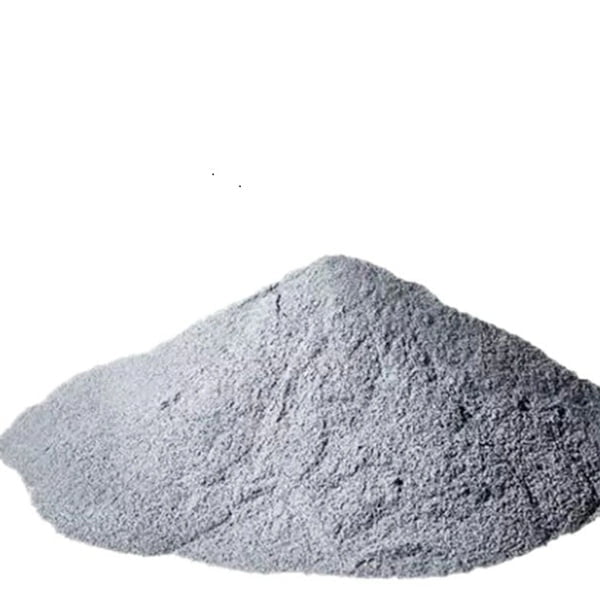2024 metallpulver för metallurgi
Innehållsförteckning
År 2024 ser ut att bli ett avgörande år för pulvermetallurgi (PM), en tillverkningsteknik som utnyttjar metallpulver för att skapa komplexa, nästan nätformade komponenter. Kärnan i dessa framsteg ligger i själva metallpulvret. Precis som ingredienserna i ett recept har den specifika typ av metallpulver som används en betydande inverkan på PM-delarnas slutliga egenskaper och prestanda. Den här artikeln dyker in i den spännande världen av 2024 metallpulveroch utforskar deras sammansättningar, egenskaper, tillämpningar och de unika fördelar de erbjuder PM-tillverkare.

10 övertygande metallpulver för 2024
Utbudet av metallpulver för PM är stort och under ständig utveckling. Här belyser vi 10 övertygande metallpulveralternativ som är redo att få en betydande inverkan under 2024:
1. Gasatomerade järnpulver:
- Sammansättning: Främst järn (Fe) med varierande innehåll av kol (C).
- Egenskaper: Utmärkt maskinbearbetning, god formbarhet, hög magnetisk permeabilitet för vissa kvaliteter.
- Applikationer: Kugghjul, kedjehjul, lager, elektriska komponenter.
- Specifikationer & storlekar: Finns i ett brett utbud av storlekar (10-150 mikron) och kolhalter (0,02-4,0 wt%).
- Leverantörer & prissättning: Finns i stor utsträckning från många globala leverantörer. Priserna varierar beroende på storlek, kvalitet och kvantitet.
- För- och nackdelar: Prisvärd, lättillgänglig, bra för applikationer med låg belastning. Lägre hållfasthet jämfört med vissa andra alternativ.
2. Pulver av karbonyljärn:
- Sammansättning: Järn (Fe) med hög renhetsgrad och sfärisk morfologi.
- Egenskaper: Utmärkt kompressibilitet, hög renhet, god bearbetbarhet.
- Applikationer: Mjukmagnetiska komponenter, elektroniska komponenter, filter.
- Specifikationer & storlekar: Finns i finare storlekar (3-20 mikrometer) jämfört med gasatomiserade pulver.
- Leverantörer & prissättning: Begränsat antal leverantörer, vanligtvis högre kostnad än gasatomiserade pulver.
- För- och nackdelar: Exceptionell renhet, idealisk för högpresterande applikationer. Begränsad tillgänglighet och högre kostnad kan vara nackdelar.
3. Pulver av förlegerat stål:
- Sammansättning: Järnbas (Fe) med specifika legeringselement som nickel (Ni), krom (Cr), molybden (Mo) beroende på önskad stålkvalitet.
- Egenskaper: Skräddarsydda egenskaper baserade på legeringselement, vilket ger högre hållfasthet, slitstyrka eller korrosionsbeständighet jämfört med järnpulver.
- Applikationer: Kugghjul, kedjehjul, verktyg, komponenter till fordonsindustrin.
- Specifikationer & storlekar: Finns i olika kvaliteter med specifika kemiska sammansättningar. Storleksintervall som liknar gasatomiserat järnpulver.
- Leverantörer & prissättning: Erbjuds av flera stålpulvertillverkare. Priserna återspeglar komplexiteten i legeringssammansättningen.
- För- och nackdelar: Brett utbud av egenskaper, utmärkt för krävande tillämpningar. Högre kostnad och potentiella utmaningar när det gäller att uppnå konsekventa egenskaper jämfört med rena järnpulver.
4. Atomiserade pulver av rostfritt stål:
- Sammansättning: Järn (Fe) tillsammans med krom (Cr) och andra grundämnen som nickel (Ni) och molybden (Mo) beroende på den specifika rostfria stålkvaliteten.
- Egenskaper: Utmärkt korrosionsbeständighet, god hållfasthet, biokompatibilitet för vissa kvaliteter.
- Applikationer: Medicinska implantat, pumpar, ventiler, utrustning för kemisk bearbetning.
- Specifikationer & storlekar: Erbjuds i olika rostfria stålkvaliteter med specifika sammansättningar. Storleksintervallet stämmer överens med gasatomiserade järnpulver.
- Leverantörer & prissättning: Finns hos flera tillverkare av pulver av rostfritt stål. Priset varierar beroende på den specifika kvaliteten.
- För- och nackdelar: Oöverträffad korrosionsbeständighet för många tillämpningar. Högre kostnad jämfört med järnpulver och potential för högre bearbetningssvårigheter.
5. Nickelpulver:
- Sammansättning: Främst nickel (Ni) med eventuella spårämnen beroende på produktionsmetod.
- Egenskaper: Utmärkt korrosionsbeständighet, hög elektrisk ledningsförmåga, goda lödningsegenskaper.
- Applikationer: Elektroniska komponenter, elektroder, filter, lödningsmaterial.
- Specifikationer & storlekar: Finns i olika storlekar (10-150 mikrometer) och renhetsgrader.
- Leverantörer & prissättning: Erbjuds av flera tillverkare av specialiserade metallpulver. Priset återspeglar renhet och bearbetningsmetod.
- För- och nackdelar: Mycket eftertraktade egenskaper för specifika tillämpningar. Högre kostnad jämfört med järnpulver och risk för oxidation under bearbetning.
6. Kopparpulver:
- Sammansättning: Främst koppar (Cu) med eventuella spårämnen beroende på produktionsmetod.
- Egenskaper: Utmärkt elektrisk och termisk ledningsförmåga,
- Applikationer: Elektriska komponenter, kylflänsar, komponenter för termisk hantering.
- Specifikationer & storlekar: Erbjuds i olika storlekar (10-150 mikron) och renhetsgrader.
- Leverantörer & prissättning: Mycket tillgängligt från många tillverkare av kopparpulver. Priserna varierar beroende på storlek, renhet och kvantitet.
- För- och nackdelar: Utmärkt för applikationer som kräver hög ledningsförmåga. Kan vara benägen att oxidera under bearbetning och kan kräva särskild hantering.
7. Aluminiumpulver:
- Sammansättning: Primarily aluminum (Al) with possible alloying elements like silicon (Si) or magnesium (Mg) depending on the desired properties.
- Egenskaper: Lightweight, good electrical conductivity, high reflectivity for some grades.
- Applikationer: Heat sinks, electrical components, reflectors.
- Specifikationer & storlekar: Offered in various aluminum grades with specific compositions. Size range aligns with gas-atomized iron powders.
- Leverantörer & prissättning: Widely available from numerous aluminum powder producers. Pricing varies based on the grade and quantity.
- För- och nackdelar: Lightweight option with good conductivity. May require careful handling due to reactivity and potential for ignition in powder form.
8. Titanpulver:
- Sammansättning: Primarily titanium (Ti) with possible trace elements depending on the production method.
- Egenskaper: High strength-to-weight ratio, excellent corrosion resistance, biocompatible for some grades.
- Applikationer: Aerospace components, medical implants, sporting goods.
- Specifikationer & storlekar: Offered in various grades with specific properties. Size range typically finer than gas-atomized iron powders.
- Leverantörer & prissättning: Limited number of suppliers, typically higher cost compared to many other options due to processing challenges.
- För- och nackdelar: Exceptional strength-to-weight ratio and biocompatibility for specific applications. High cost, potential for processing difficulties, and sensitivity to contamination are drawbacks.
9. Nickel-based Superalloy Powders:
- Sammansättning: Complex alloys based on nickel (Ni) with elements like chromium (Cr), cobalt (Co), molybdenum (Mo), and others depending on the specific alloy.
- Egenskaper: Exceptional high-temperature strength, oxidation resistance, creep resistance.
- Applikationer: Turbine blades, jet engine components, high-performance fasteners.
- Specifikationer & storlekar: Offered in various superalloy grades with specific compositions. Size range typically finer than gas-atomized iron powders.
- Leverantörer & prissättning: Limited number of suppliers due to the complexity of the alloys. Very high cost compared to most other options.
- För- och nackdelar: Unmatched properties for high-temperature applications. Extremely high cost, complex processing requirements, and limited availability are significant drawbacks.
10. Metal Injection Molding (MIM) Feedstock Powders:
- Sammansättning: Combination of fine metal powders (<20 microns) with a polymeric binder system.
- Egenskaper: Enables near-net-shape manufacturing of complex geometries with good dimensional accuracy.
- Applikationer: Gears, sprockets, housings, intricate electronic components.
- Specifikationer & storlekar: Offered in various metal compositions (steel, stainless steel, etc.) with specific binder systems.
- Leverantörer & prissättning: Available from several MIM feedstock producers. Pricing varies based on the metal composition and complexity of the binder system.
- För- och nackdelar: Enables intricate part geometries with good mechanical properties. Higher processing complexity and potential for higher costs compared to conventional PM techniques.
Välja rätt metallpulver
Selecting the optimal metal powder for your PM application is akin to a skilled matchmaker finding the perfect partner. Just as compatibility is crucial in relationships, the right powder needs to possess the properties that align with your desired part performance. Consider these key factors when making your selection:
- Nödvändiga egenskaper: Identify the essential properties for your application, such as strength, corrosion resistance, electrical conductivity, or machinability.
- Bearbetningsöverväganden: Evaluate the compatibility of the powder with your chosen PM technique (compaction, sintering) and equipment capabilities.
- Kostnadseffektivitet: Balance the cost of the powder with the overall processing cost and the value proposition of the final part.
The Future of Metal Powders: Innovation Takes Flight
The future of metal powders for PM is brimming with exciting possibilities. Here are some trends to watch:
- Development of Novel Alloys: Researchers are continuously formulating new metal powder alloys with tailored properties for specific applications.
- Advanced Powder Production Techniques: Emerging technologies like additive manufacturing (AM) are paving the way for the production of powders with unique morphologies and properties.
Tillämpningar av 2024 Metal Powders
The versatility of 2024 metal powders extends far and wide, fueling innovation across a multitude of industries. Here, we delve into some of the key application areas where these remarkable materials are making a significant impact:
Fordonsindustrin:
- Gears and Sprockets: Metal powders like gas-atomized iron and pre-alloyed steels are increasingly used to manufacture high-precision, near-net-shape gears and sprockets for transmissions and other powertrain components. These PM parts offer advantages like weight reduction, improved fuel efficiency, and design flexibility compared to traditionally machined components.
- Motorkomponenter: Nickel-based superalloy powders are finding their niche in the production of high-performance engine components like turbine blades and jet engine disks. Their exceptional high-temperature strength and creep resistance enable them to withstand the demanding conditions within an engine.
- Lightweighting Efforts: Aluminum and titanium powders are being harnessed to create lightweight structural components for vehicles. This focus on weight reduction translates to improved fuel economy and overall vehicle performance.
Flyg- och rymdindustrin:
- Strukturella komponenter: Titanium and nickel-based superalloy powders are employed to manufacture high-strength, lightweight components for airplanes and spacecraft. These PM parts contribute to the overall weight reduction of aerospace vehicles, which is critical for fuel efficiency and payload capacity.
- Additiv tillverkning (AM): Metal powders play a pivotal role in AM techniques like laser sintering and electron beam melting, used to create complex, near-net-shape aerospace components with intricate geometries.
Medicintekniska produkter:
- Biokompatibla implantat: Stainless steel and titanium powders with biocompatible properties are utilized to manufacture orthopedic implants like hip and knee replacements. These PM implants offer excellent corrosion resistance, biocompatibility, and can be tailored to mimic the mechanical properties of bone.
- Intricate Components: MIM feedstock powders, combining metal powders with a polymeric binder, enable the creation of complex medical devices with high dimensional accuracy and intricate features. This technology is particularly valuable for microfluidics and other specialized medical applications.
Electronics Industry:
- Elektriska komponenter: Copper and nickel powders are used to manufacture electrical conductors, connectors, and heat sinks within electronic devices. Their excellent electrical conductivity and thermal management properties are crucial for efficient power distribution and heat dissipation.
- EMI Shielding: Iron and aluminum powders are employed to create electromagnetic interference (EMI) shielding components that protect electronic devices from unwanted electromagnetic interference.
Konsumentvaror:
- Sportartiklar: Titanium powders are finding application in the production of high-performance sporting goods like bicycle frames and golf clubs. Their exceptional strength-to-weight ratio allows for the creation of lightweight yet robust equipment.
- Complex Components: MIM feedstock powders are utilized to manufacture intricate components for consumer goods like gears, housings, and fasteners within electronic devices, cameras, and other applications.

Fördelar med 2024 Metal Powders
The compelling properties and processing characteristics of 2024 metal powders offer a plethora of advantages for PM manufacturers. Here’s a closer look at some of the key benefits:
- Tillverkning i nära-nätform: Metal powders enable the creation of complex components with minimal material waste, reducing production costs and environmental impact.
- Flexibilitet i utformningen: The ability to tailor powder properties and utilize AM techniques opens doors for innovative part designs with intricate features that are challenging or impossible to achieve with traditional manufacturing methods.
- Materialeffektivitet: PM allows for the efficient use of valuable materials, minimizing scrap and contributing to sustainable manufacturing practices.
- Massanpassning: The relative ease of processing metal powders makes them suitable for mass customization, enabling the creation of parts with specific properties for niche applications.
- Förbättrade mekaniska egenskaper: PM techniques like hot isostatic pressing (HIP) can be used to create components with superior mechanical properties compared to traditional casting or machining methods.
Disadvantages of 2024 Metal Powders
While metal powders offer numerous advantages, it’s essential to acknowledge some potential limitations to ensure successful PM production:
- Higher Initial Costs: Metal powders themselves can be more expensive than bulk materials like wrought steel or aluminum.
- Processing Complexity: PM techniques may require specialized equipment and expertise compared to traditional manufacturing methods.
- Flödesförmåga för pulver: Ensuring consistent powder flow during processing can be a challenge, particularly with finer powders.
- Part Density: Achieving the desired density in PM parts can necessitate specific processing techniques and post-processing treatments.
Conclusion: 2024 and Beyond – A Bright Future for Metal Powders in PM
The year 2024 marks a significant turning point for metal powders in PM. With their exceptional properties, versatility across industries, and the promise of continuous innovation, these remarkable materials are poised to revolutionize the manufacturing landscape. Here are some key takeaways to remember:
- The selection of the optimal metal powder hinges on the desired part properties, processing compatibility, and cost-effectiveness.
- From automotive and aerospace to medical devices and consumer goods, 2024 metal powders are fueling advancements across diverse industries.
- PM techniques offer distinct advantages like near-net-shape manufacturing, design flexibility, and material efficiency.
Looking ahead, the future of metal powders in PM is brimming with possibilities:
- Novel Alloy Development: Researchers are constantly pushing the boundaries, formulating new metal powder alloys with properties tailored for specific applications. This ongoing innovation will unlock even more possibilities for PM.
- Advanced Powder Production: Emerging technologies like additive manufacturing (AM) are paving the way for the production of powders with unique morphologies and properties. These advancements will further expand the design possibilities for PM parts.
- Sustainability Focus: The PM industry is increasingly prioritizing sustainability. The efficient use of materials with metal powders aligns perfectly with these goals, minimizing waste and environmental impact.
As the world of PM continues to evolve, 2024 metallpulver stand as a testament to the power of innovation. Their ability to create complex, high-performance parts with minimal waste positions them as a game-changer for the manufacturing industry. By harnessing their potential and embracing continuous advancements, PM manufacturers can unlock a future filled with exciting possibilities.

VANLIGA FRÅGOR
Q: What are the key factors to consider when choosing a metal powder for PM?
A: The selection process should consider the required properties for your application (strength, corrosion resistance, etc.), processing compatibility with your chosen PM technique, and cost-effectiveness of the powder itself and the overall processing.
Q: What are some of the advantages of using metal powders in PM?
A: PM with metal powders offers several benefits, including near-net-shape manufacturing with minimal waste, design flexibility for intricate components, material efficiency, and the potential for superior mechanical properties compared to traditional methods.
Q: Are there any limitations to consider when using metal powders in PM?
A: While advantageous, metal powders can have higher initial costs compared to bulk materials. PM techniques themselves can be more complex and require specialized equipment. Ensuring consistent powder flow and achieving the desired part density can also present some challenges.
Q: What are some of the emerging trends in the world of metal powders for PM?
A: The development of novel alloys with tailored properties, advanced powder production techniques using AM, and a growing focus on sustainability within the PM industry are all exciting trends shaping the future of metal powders.
Dela på
MET3DP Technology Co, LTD är en ledande leverantör av lösningar för additiv tillverkning med huvudkontor i Qingdao, Kina. Vårt företag är specialiserat på 3D-utskriftsutrustning och högpresterande metallpulver för industriella tillämpningar.
Förfrågan för att få bästa pris och anpassad lösning för ditt företag!
Relaterade artiklar

Högpresterande segment för munstycksvingar: Revolutionerande turbineffektivitet med 3D-utskrift i metall
Läs mer "Om Met3DP
Senaste uppdateringen
Vår produkt
KONTAKTA OSS
Har du några frågor? Skicka oss meddelande nu! Vi kommer att betjäna din begäran med ett helt team efter att ha fått ditt meddelande.

Metallpulver för 3D-printing och additiv tillverkning
FÖRETAG
PRODUKT
cONTACT INFO
- Qingdao City, Shandong, Kina
- [email protected]
- [email protected]
- +86 19116340731
















